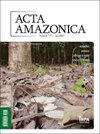Resistance of acetylated Jacaranda copaia wood to termites and decaying fungi attack
IF 0.8
4区 环境科学与生态学
Q4 ECOLOGY
引用次数: 0
Abstract
ABSTRACT The natural durability of the wood is essential for the definition of its use, and this property can be enhanced with the proper chemical treatment of the wood. Thus, the objective of this study was to evaluate the resistance to termites and decay fungi of Jacaranda copaia wood chemically modified through acetylation. Five experimental treatments were assessed: acetylation for 2, 4, 6 and 8 hours and a control (non-acetylated). The acetylation was carried out by immersing wood samples in acetic anhydride at 90 °C. Acetylated and control samples were subjected to the action of xylophagous termites (Nasutitermes sp.) and decaying fungi (Gloeophyllum trabeum and Trametes versicolor). The acetylation process significantly increased the resistance of Jacaranda copaia wood to the attack of the xylophagous organisms. There was no mass loss after exposure to termites of the wood in any of the acetylation treatments, while in the control wood, mass loss was 9.5%. Regarding the decaying fungi, mass loss occurred in all treatments. Acetylation for 6 and 8 hours were the most efficient chemical treatments, increasing the resistance class of the Jacaranda copaia wood to highly resistant.乙酰化蓝花菜木对白蚁和腐朽真菌攻击的抗性
木材的天然耐久性对其用途的定义至关重要,这种特性可以通过对木材进行适当的化学处理来增强。因此,本研究的目的是评价经乙酰化修饰的蓝花楹木材对白蚁和腐烂真菌的抗性。评估了五种实验处理:乙酰化2、4、6和8小时,以及对照组(非乙酰化)。将木材样品浸泡在90°C的乙酸酐中进行乙酰化。乙酰化和对照样品分别受到食木白蚁(Nasutitermes sp.)和腐烂真菌(Gloeophyllum trabeum和Trametes versicolor)的作用。乙酰化处理显著提高了蓝花楹木材对食木生物的抗性。各乙酰化处理均未见白蚁对木材质量的影响,而对照木材的质量损失达9.5%。对于腐殖真菌,各处理均发生质量损失。乙酰化处理6小时和8小时是最有效的化学处理,使蓝花楹木材的抗性等级提高到高抗性。
本文章由计算机程序翻译,如有差异,请以英文原文为准。
求助全文
约1分钟内获得全文
求助全文
来源期刊

Acta Amazonica
PLANT SCIENCESECOLOGYZOO-ECOLOGY
CiteScore
1.70
自引率
0.00%
发文量
34
审稿时长
22 weeks
期刊介绍:
Acta Amzonica is a multidisciplinary, peer-reviewed, open access, free-of-charge scientific journal for research in and about the Amazon region, published since 1971 by the Instituto Nacional de Pesquisas da Amazônia - INPA, in Brazil.
The journal publishes quarterly issues containing articles and short communications in English across a broad range of disciplines, including Agronomy and Forestry, Animal Sciences and Fisheries, Biodiversity and Conservation, Biotechnology, Chemistry and Pharmacology, Environmental Sciences, Food Sciences, Geosciences, Health Sciences, Human and Social Sciences, and Materials Technology.
 求助内容:
求助内容: 应助结果提醒方式:
应助结果提醒方式:


